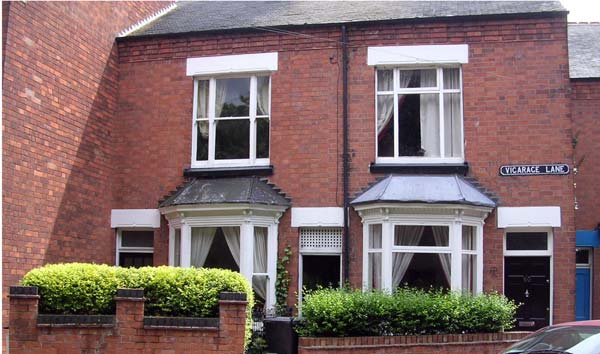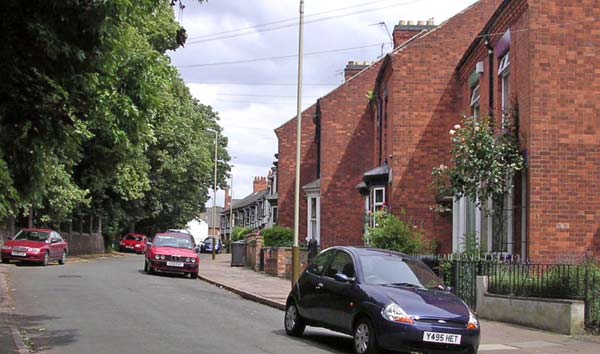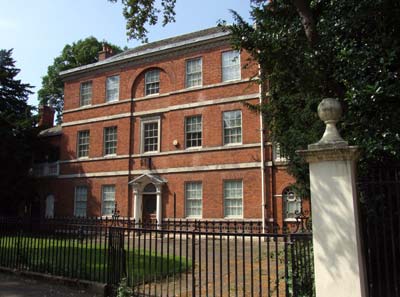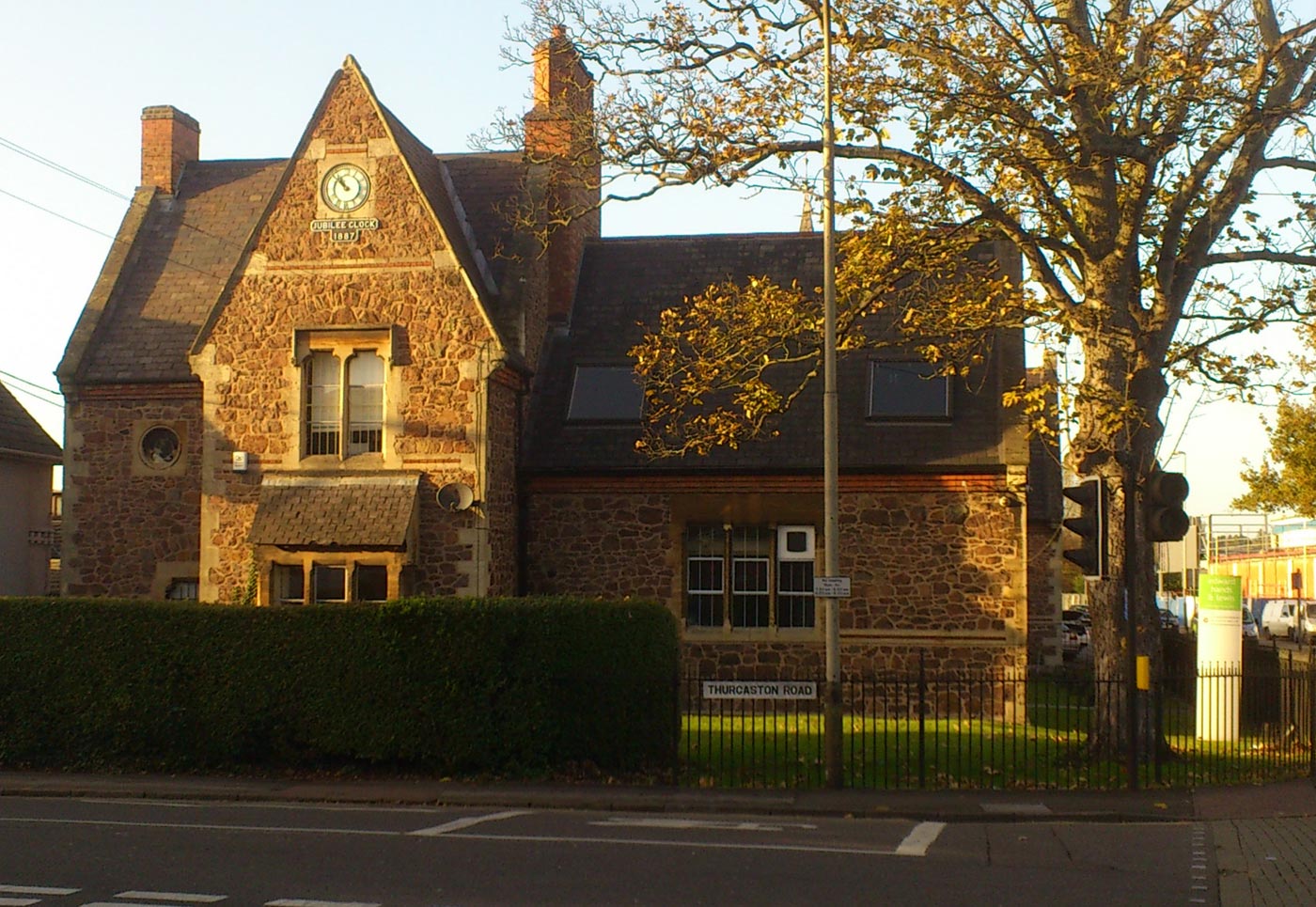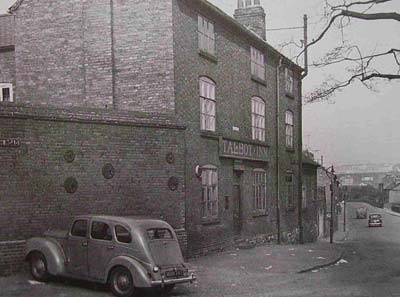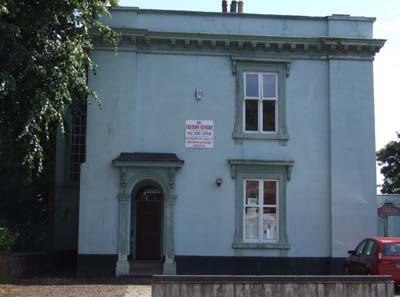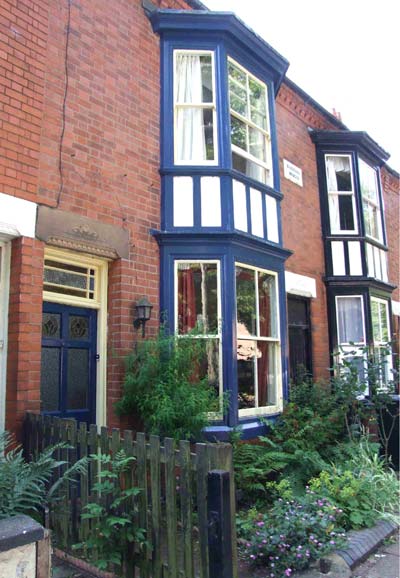Buildings of Interest
Within the Belgrave Hall Conservation Area there are several buildings of significant interest.
Belgrave House
On the west side of Church Road, and built diagonally to Belgrave Hall to ensure an uninterrupted view from the Hall across ‘The Gravel’ to its original garden, Belgrave House was built about 70 years later than Belgrave Hall in the fashionable Queen Anne style. Its red brick façade has a different proportion of solid to void compared with Belgrave Hall and the centre portion is slightly recessed to emphasise the main entrance. Decoration is restrained, consisting of paired horizontal stucco bands, a simple eaves cornice with modillions and flat window arches picked out with contrasting mortar. Visual interest is concentrated around the centrally placed doorcase which has half-columns, a fanlight and open pediment, and the 19th century side wings with their painted balustrades, urns and window traceries. Along the frontage to Church Road, slender decorative railings that are contemporary with the house afford an unrestricted view of the front of the house. The frontage to the west side of Church Road is completed by the Grade II listed gateway and railings of Belgrave Gardens. The gate piers add extra visual interest with cornices and ball finials and the curved flanking railings terminate in tall stucco piers topped with urns and torches.
The House has now been leased by the Council and once more assumes its place as a home, having been a storage facility for the last 40 years. The House along with the stable block have been sympathetically renovated to a high standard by the current owner. The stables have been turned into flats. This has ensured that the buildings have a whole new lease of life and should continue to thrive for the next 100 years.
Former National School
The corner of Thurcaston Road and Loughborough Road is marked on its northern corners by two buildings, each different in style and date. On the west side is the former National Schools, 1 Thurcaston Road (now in use as offices). Single storied and neatly gabled with ecclesiastical styled windows in the prominent gabled ends, this small school is built in Mountsorrel granite with limestone dressings around the windows and doors. Complete with small mock buttresses, clock and topped with a bell tower in the form of a flêche with fishscale patterned lead roof, this is an important and prominent landmark at the entrance to the conservation area.
Talbot Inn
The Talbot Inn, 4 Thurcaston Road, named after a now extinct breed of hunting dog, has been much altered and now presents a two storey façade to the corner rather than the three storey elevation it had possessed since the late 18th century and lost in 1958. However, its historic associations with Belgrave village and the turnpike roads, its prominent location, and the manner in which it closes the view westwards from the A6 junction, make this an important landmark.
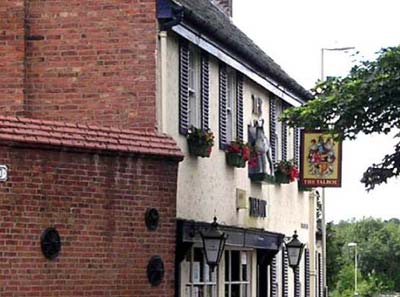
The Tuition Centre
The Tuition Centre at 201 Loughborough Road is a two storey stucco-faced Italianate style property. Previously a house built on the site of what was known as ‘Old Hall’ (and reputed to contain the remnants of that earlier medieval building), it has an unflattering colour scheme but retains many decorative features, such as moulded window surrounds with flat pediments supported on scrolled brackets, a moulded doorcase with another flat pediment around a recessed front door, a deep plain parapet with a cornice supported on plain brackets.
The rear of the building is currently used as the Sri Jeya Durga Temple, visit their Facebook page here.
Vicarage Lane Cottages
The south edge of the conservation area is defined by the staggered and curving row of houses at 2a-62 Vicarage Lane. These were built at the very end of the 19th century and the beginning of the 20th and the continuous terrace rising up the hill from the canal in a gently sweeping double curve creates a particularly fine townscape. Although many properties have lost their original sash windows or front doors (or both) the mock timber framing between the double-height bays is generally intact. Where these have been picked out in contrasting colours as intended by the original builders they add another positive element to the vertical rhythms set up by the bay windows. Front boundary treatments are varied but are still sufficiently intact to provide an important visual edge and examples of original front garden walls can be seen at numbers 20 and 32. At the eastern end of the street there is a small early 19th century brick cottage at 2 Vicarage Lane, with a moulded doorcase and segmental arches above the ground floor windows. The loss of its original windows and the painted brickwork is unfortunate
